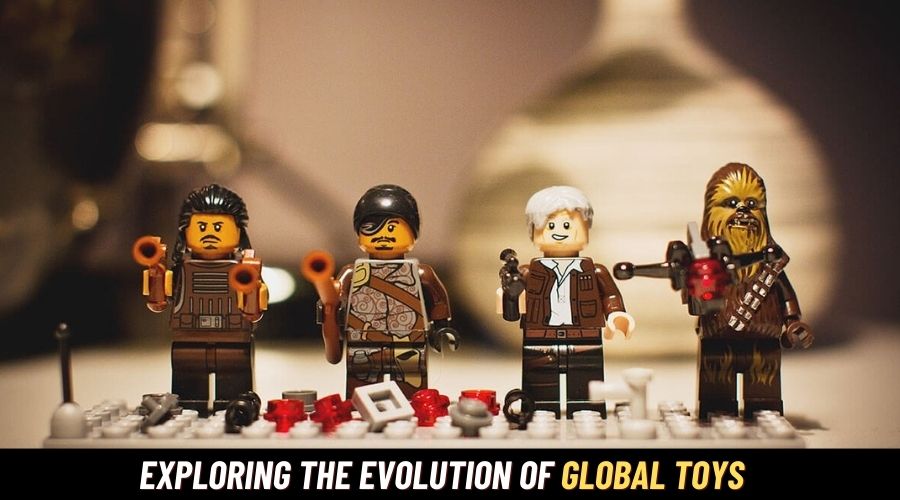Exploring the Evolution of Global Toys
In the ever-evolving world of toys, giants in the industry are pivotal in shaping the way kids play and learn. Giants in the industry, like Mattel, have played a pivotal role in shaping how they play and learn. Over the decades, the toy industry has undergone remarkable transformations, driven by technological advancements, changing consumer preferences, and the relentless pursuit of innovation.
This article delves into the fascinating journey of global toys, tracing their evolution through six key stages. From humble beginnings to the dynamic present, these stages shed light on the industry’s growth, adaptability, and enduring appeal.
The Birth of Toy Manufacturing
The origins of the toy industry can be traced back to the early 19th century when small-scale artisans began crafting toys by hand. These craftsmen used wood, clay, and cloth materials to create simple yet imaginative playthings.
This era marked the birth of toy manufacturing, igniting the spark of creativity in children worldwide. These handmade toys were a testament to human ingenuity despite the limited resources of the time.
Industrial Revolution
The Industrial Revolution brought about a seismic shift in the toy industry. Mass production techniques revolutionized manufacturing, making toys more affordable and accessible to a wider audience.
Metal and plastic toys emerged, offering enhanced durability and a broader range of options for children. This marked a significant turning point as the industry began to scale up and cater to the growing toy demand.
The Golden Age of Toys
The mid-20th century can be aptly described as the golden age of toys. This era witnessed the rise of iconic creations that transcended borders and became cultural phenomena.
Action figures, board games, and electronic toys took center stage, captivating children’s hearts worldwide.
These toys not only provided hours of entertainment but also fueled a generation’s imagination and social interactions.
According to the founder of Toynk, “Toys have the power to transcend boundaries and unite people through play and imagination.”
Technological Advancements
The late 20th century brought forth a technological revolution that profoundly impacted the toy industry. Electronic and digital toys, including video games and interactive learning devices, reshaped the landscape.
These toys incorporated cutting-edge technology to offer immersive experiences, keeping pace with the changing preferences of tech-savvy children. It showcased the industry’s adaptability to the evolving digital age.
Read It Also: 5 Tips to Get Better at Using Netflix
Globalization and Expansion
As the world became more interconnected, toy companies seized the opportunity to expand their reach beyond domestic markets. Globalization became the buzzword, and strategic acquisitions and partnerships were forged to solidify the presence of toy companies worldwide.
This expansion allowed them to offer a diverse range of toys, catering to various cultures’ diverse tastes and preferences. Toys became a global language, transcending geographical boundaries.
Sustainability and Eco-Friendly Toys
In the current era of heightened environmental awareness, the toy industry strongly emphasises sustainability. Manufacturers are increasingly using eco-friendly materials and adopting environmentally responsible production practices.
The focus is not only on creating toys that entertain but also on those that contribute to a greener and more sustainable future. This commitment to eco-consciousness reflects the industry’s dedication to fun and responsibility.
Conclusion: Evolution of Global Toys
The evolution of global toys showcases the industry’s remarkable adaptability and resilience. From the simplicity of handmade toys to the complexity of digital marvels, toys have come a long way, enriching the lives of generations of children. As people look to the future, sustainability and innovation will continue to shape the global toy landscape, ensuring that the joy and wonder of play remain timeless.
In conclusion, the global toy industry, led by companies like Mattel, has traversed a remarkable path, evolving to meet children’s changing needs and desires worldwide. From the simplicity of handmade toys to the complexity of digital marvels, toys have consistently captured the hearts and minds of young and old alike.
The future promises even greater diversity, sustainability, and innovation in the world of toys, ensuring that this cherished industry remains vibrant and relevant for generations to come.
